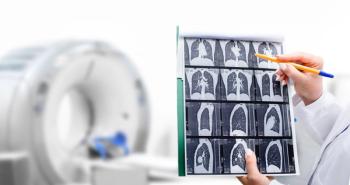
COVID-19 and Firearms in the United States
Could the more than 2.5 million firearms purchased in March lead to questionable suicide rate following COVID-19?
While United States public health members have focused on maintaining the spread of the coronavirus disease 2019 (COVID-19) since February of this year, gun sales in the country have skyrocketed, according to a recent report in the Annals of Internal Medicine.
More than 2.5 million firearms were sold this March, including 1.5 million handguns. Noted in the report, increased gun ownership is associated with a heightened risk for firearm-related suicide. Due to unprecedented times as the U.S. faces a pandemic, the country is dealing with a combination of a public health and economic disaster. The physical distancing necessary to curb the COVID-19 respiratory virus has interferred with the social lives of many in the country and world. Many people are living in isolation, and the mental health of the population will likely suffer. Combined, these forces create a climate with the potential to increase firearm-related suicides.
Related:
According to the report, firearm-related suicides were increasing well before COVID-19. From 2006 to 2018, firearm-related suicide rates increased by more than 25%. In 2018, there were 24,432 firearm-related suicides in the U.S. With suicide rates increasing, the number of firearm background checks increased, as well, from 10,036, 933 in 2006 to 28,369,750 in 2019. This was an annual increase of 14%.
In March 2020, gun sales rose up 85% compared to sales in March 2019. These are the highest firearm sales ever recorded in the U.S., the report says. Those who purchase handguns have a 22-fold higher rate of firearm-related suicide within the first year than those who did not purchase a handgun, the report says.
Among men, for every 10 percentage points increase in household firearm ownership rates at the state level, there is an increase in firearm suicides of 3.1 per 100, 000 persons, according to the report. Decreased gun restrictions and increased access to firearms are associated with higher firearm-related suicide. In addition, the presence of a firearm in a home is associated with a two- to 10-times greater risk for suicide than in a home without a firearm. This applies to all household members, not just the gun owner, and persists for years after the purchase of the firearms.
As COVID-19 brings upon new challenges for the world to face, the combination of factors could release a wave of suicide that is enabled by the growing exposure to household firearms.
It's known natural disasters can have a number of effects on mental health. A substantial proportion of people exposed to a natural disaster will have psychological distress and develop mental health disorders, but it all matters to the amount of stress they take on. Unemployment alone is likely responsible for thousands of suicides each year. After the 2008 economic crisis, the relative risk for suicide associated with unemployment was elevated approximately 20% to 30% in 53 European countries and the U.S., particularly among men and in countries with higher levels of job loss, the report says. As of mid-April 2020, more than 22 million Americans applied for unemployment insurance in just four weeks.
The report claims this pandemic will clearly have lasting economic repercussions.
As for a potential suicide increase, it's a predictable and preventable second wave. When all mechanisms are considered, most of those who attempt suicide do not die. The major preventable exception to this is firearm-related suicide, in which the fatality rate is more than 40 times that of drug poisoning, the most common suicide method.
Acts of prevention are now crucial and population and individual approaches are needed to reduce the risk for suicide in the coming months. Federal and state programs targeting economic relief could have widespread influence on suicide rates. Advancing social connection should be a local and national public health priority. However, most important, is limiting access to firearms to those most at risk. Efforts prior to limit weapons to decrease suicides have shown success, including bridge barriers, removing carbon monoxide from domestic gas, and decreasing access to organophosphate pesticides, the report says.
It's up to state- and federal-level policies to make changes. Only 16 states have effective firearm storage legislation. Federal buyback programs could provide an appropriate means for people to dispose of guns and offer necessary economic incentives to do so. The report recomends “smart guns,” which restrict use through biometrics, should be made available for sale in the U.S. Federal funding of firearm research is needed, also. This funding has been banned since 1996, during which time 800,000 firearm deaths have occurred. The recent modest allotment of federal firearm research funding is just a small start for researchers to investigate how to make firearm technology safer, keep people safer with their firearms, and improve firearm safety in society overall.
Newsletter
Get the latest industry news, event updates, and more from Managed healthcare Executive.


















































